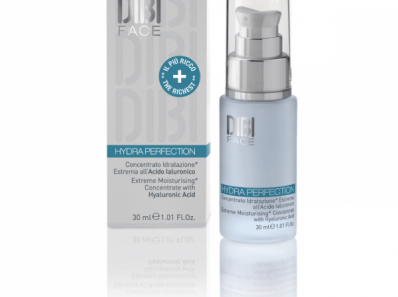
Dental signs of ageing and how to proactively protect yourself from these changes
We’ve heard the phrase ‘long in the tooth’ which
means getting old, but its origin is based on an
indication of dental ageing. Gum health specialist Dr
Sulaman Anwar explains the classic clues, and how
you can protect yourself from developing the dental
signs of ageing.
Gum Disease
You are more likely to develop gum disease as you
age. Yes, that’s true, as we get older, our bodies undergo several changes that can increase
the risk of gum disease. These changes can include a decrease in saliva production,
changes in hormone levels, and a decrease in immune function.
Gum disease, also known as periodontal disease, is a bacterial infection that affects the
gums and bones that support the teeth. It is caused by plaque build-up on the teeth and
gums, which can lead to inflammation, bleeding, and ultimately, tooth loss if left untreated.
While gum disease can occur at any age, it is more common in older adults. In fact,
according to the Centers for Disease Control and Prevention (CDC), almost 70% of
adults over the age of 65 have some form of gum disease.
Ageing Jaw Bone/Bone Loss
The jaw bone can recede with age. This process is called bone resorption, and it occurs
when the bone tissue is broken down and absorbed by the body. Several factors can
contribute to bone resorption in the jaw, including genetics, hormonal changes, poor
nutrition, smoking, certain medical conditions or medications. As the bone tissue in the jaw is
resorbed, it can lead to a number of oral health problems, including tooth loss, gum disease,
and changes in the facial structure.
Bone resorption can be more common in women after menopause, due to changes in
hormone levels that can lead to a decrease in bone density. Additionally, tooth loss can
contribute to bone resorption, as the bone tissue in the jaw no longer has the stimulation
from the tooth roots to maintain its density.
What should I do to prevent this?
To prevent gum disease and bone resorption in the jaw, it is important to maintain good oral
hygiene habits, including brushing twice a day, flossing daily, and visiting the dentist
regularly for dental check-ups and cleanings. This can help to prevent the build-up of plaque
and bacteria, which can lead to gum disease and jaw bone loss.
Additionally, eating a healthy diet is also important for preventing jaw-bone loss. Foods that
are rich in calcium and other essential minerals can help to promote healthy bones and
teeth. Using tobacco products, including cigarettes and chewing tobacco, can be extremely
damaging to the jaw bone and other oral tissues. Quitting smoking or using other tobacco
products is one of the best things you can do for your overall oral and overall health.
If you notice any signs of gum disease, such as redness, swelling, bleeding, or sensitivity in
the gums, it is important to see a dentist or periodontist (gum health specialist) for an
assessment and treatment.
Gum Recession
As we age, it's common for our gums to recede or pull away from our teeth. Here are some
of the effects of age on gum recession:
Exposed tooth roots: As the gum tissue recedes, the root surface of the tooth may
become exposed. This can lead to increased sensitivity to hot and cold
temperatures, as well as an increased risk of tooth decay.
Appearance: Receding gums can make teeth appear longer and create a ‘toothy’
smile, which can become a cosmetic concern and has led to the expression ‘long in
the tooth’
Tooth mobility: Severe gum recession can lead to loosening of teeth, as the
surrounding bone and tissue may no longer provide adequate support.
Age-related health conditions such as osteoporosis, may contribute to the
development of gum recession.
What should I do to prevent this?
Be gentle when brushing and use a soft-bristled toothbrush rather than hard bristles. Always
brush in gentle circular motions your teeth rather than brushing back and forth across the
teeth as this can create notches or grooves at the gum line. Do not overbrush, as brushing
more than three times a day or for longer than two minutes at a time can cause damage to
tooth enamel and gums.
Tooth wear
Tooth wear is the loss of tooth surface. Here are some of the typical effects of age on tooth
wear:
Over time, the enamel on our teeth can become thinner due to natural wear and tear,
as well as exposure to acidic foods and drinks. This can lead to increased sensitivity
and increased risk of decay.
As we age, the surfaces of our teeth can wear down due to the normal biting and
chewing motions we perform every day. This can lead to flattened, worn-down teeth
and an increased risk of fracture.
Aggressive toothbrushing, using abrasive toothpaste, or using abrasive materials to
clean teeth can cause tooth wear over time, particularly on the sides of teeth or near
the gumline.
Tooth fractures: As teeth wear down, they can become weaker and more prone to
fractures or chipping, particularly in individuals who grind or clench their teeth.
Changes in bite: As teeth wear down and become shorter, the way our teeth fit
together when we bite can change, which may lead to jaw pain, headaches, and
other dental problems.
What should I do to prevent this?
While some degree of tooth wear is natural with age, it's important to maintain good oral
hygiene habits. You should avoid excessive grinding or clenching of your teeth with the use
of a custom-made nightguard appliance as instructed by your dentist.
Tooth Decay
We are at a higher risk of tooth decay as we get older. There are several reasons for this:
Receding gums: As we age, our gums can recede, exposing the roots of our teeth.
This can increase the risk of tooth decay, as the roots are not as well protected by
enamel as the rest of the tooth.
Dry mouth: Many older adults experience dry mouth, either as a side effect of
medications or due to changes in saliva production. Saliva helps to neutralise acids
and wash away food particles, so a lack of saliva can lead to an increased risk of
tooth decay.
Reduced manual dexterity: Older adults may have difficulty brushing and flossing
properly due to arthritis or other physical limitations. This can lead to inadequate
removal of plaque and an increased risk of decay.
Dental restorations: As we age, dental restorations such as fillings and crowns may
begin to fail or wear down, increasing the risk of decay around the filling.
What should I do to prevent this?
In addition to maintaining good oral hygiene habits, you should speak with your dentist who
may recommend additional preventive measures, such as higher-strength fluoride
toothpastes, fluoride treatments or dental sealants, to help protect your teeth from decay.
Drinking plenty of water, avoiding sugary or acidic foods and drinks, and discussing any
medications that may cause dry mouth with your doctor can also help reduce the risk of
tooth decay.
Tooth discolouration
As we age, it's common for our teeth to become darker or discoloured.
Here are some of the effects of age on tooth colour:
Over time, the outer layer of tooth enamel can become thinner, allowing the yellowish
colour of the underlying dentin to show through.
Consumption of certain foods, beverages, and tobacco products can cause staining
of tooth enamel, which can become more pronounced with age.
Certain medications can cause tooth discolouration or yellowing.
Trauma to the teeth, such as from falls or accidents, can cause discolouration or
darkening of the affected tooth.
Over time, fillings or crowns may begin to show signs of wear and discolouration,
which can impact the overall colour of the teeth.
Certain health conditions, such as liver disease or chemotherapy, can cause tooth
discolouration or yellowing.
What should I do to prevent this?
While some degree of tooth discolouration is natural with age, there are several steps you can
take to maintain or improve the brightness of your teeth, such as limiting the consumption of
stain-causing foods (tomato-based products, curries etc.) and drinks (coffee, tea and red
wine). You should discuss with your dentist, options to professionally whiten your teeth,
dental bonding, or porcelain veneers.
Tooth Crowding
With age there is the tendency of teeth to gradually shift back towards their original positions
even after orthodontic treatment. While this can happen at any age, it is more common in
older adults due to changes in the gum tissue and bones that support the teeth. The teeth
most susceptible to crowding or becoming overlapped are the lower front teeth. As the jaw
bone shrinks with age, the teeth start to shrink inwards. This is called lower incisor crowding.
What should I do to prevent this?
Treatment for lower incisor crowding typically involves orthodontic treatment to realign the
teeth and create more space in the jaw. This can include traditional braces, clear aligners, or
other orthodontic appliances. In some cases, extractions of one or more teeth may be
necessary to create enough space to properly align the teeth.
After orthodontic treatment, it is important to wear retainers as directed by your orthodontist.
Retainers help to maintain the new positions of the teeth and prevent them from shifting
back to their original positions. However, if retainers are not worn as directed or are not worn
at all, there is a higher risk of teeth relapse.
Dry Mouth
Saliva production can reduce with age. As we get older, the salivary glands may produce
less saliva, which can lead to a condition called xerostomia or dry mouth. This can have
several causes, including medications, certain medical conditions, and radiotherapy. A dry
mouth can lead to a number of oral health problems, including an increased risk of tooth
decay, gum disease, and oral infections. Saliva helps to neutralise acids produced by
bacteria in the mouth, wash away food particles, and provide minerals that help to
strengthen tooth enamel.
What should I do to prevent this?
To help combat dry mouth, it's important to stay hydrated, chew sugar-free gum to stimulate
saliva production, avoid alcohol and tobacco products, and talk to your doctor about
adjusting medications if dry mouth is a side effect. Your dentist may recommend products
such as saliva substitutes or prescription medications to help increase saliva production.
Facial Appearance
Our smile does not necessarily shrink with age, but changes in our facial structure and
dental health can impact the appearance of our smile over time. As we age, the loss of bone
and muscle mass in the face can lead to a sagging or drooping appearance, which can
impact the appearance of the smile. Additionally, gum recession, tooth wear, and tooth loss
can all impact the size and shape of the teeth, which can also impact the overall appearance
of the smile.
What should I do to prevent this?
It's important to note that maintaining good oral hygiene habits, visiting the dentist regularly,
and considering cosmetic dental treatments can all help to maintain a healthy and attractive
smile as we age. Additionally, facial exercises and a healthy lifestyle can also help to
maintain muscle tone and overall facial structure, which can help to support a more youthful-
looking smile.
For more top tips from Dr Sulaman please visit https://www.drsulaman.com/



